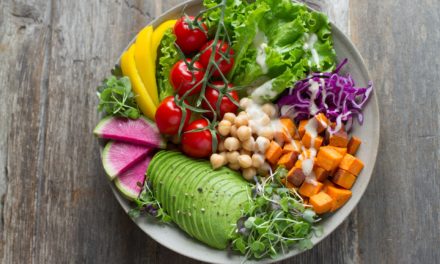[ad_1]
How can a beanstalk tell us so much about human tissue engineering? It was for this reason that the research began, taking an alternative way beyond DNA, and to verify this, an independent researcher published a study about, when studying the iPSCs and other pluripotent vegetable cells decided to slice a beanstalk completely from its roots the leaves, using a tissue-slicer, soon after photocopying the cut parts to digitally reassemble and map the internal microfluidics as a template to be applied to the artificial tissues. The study, named “Biomimetic and Functioning Artificial Tissues – Mastering Irrigation, Nourishment, Microfluidics and Nerve Networks to Keep the Cells Alive,” exposes research on nerve cell life support that makes up artificial tissues and organs.
Through a simple beanstalk the essence of life can be studied at its heart, bringing relevant pieces of information to modern medicine and even for a possible understanding of the artificial life possibility.
This research aims at collaborative work focused on the nourishment of cells in artificial tissues, in the long work for mapping the tissues and standardizing the parts, besides identifying with code the items of the tissues and processes, for each circulatory and nervous system. The study also shows the potential that new sciences and technologies confer on the feasibility of new studies towards artificial life, which is related to the greater precision in the understanding of the whole at the nanotopographic level including processes of the biological tissues. Among the subjects and ideas involved in the study, besides the future perspectives to this research contemplate:
• Cataloguing vessels and microfluidic parts and minimal process data to keep cells alive in tissues.
• Mapping and code each circulation microchannel with code I.D. number linked to a datasheet.
• Generate accurate data and information to feed new human artificial tissue production machines.
• Generate catalogued information on biological spare-parts with datasheets with full specification and characterization
• Use the traditional engineering techniques of complex machines and integrated circuit architecture for microfluidic networks in human tissues.
The future intention is to map the entire microfluidic and bioelectrical flora of human tissues and add an I.D. number to each irrigation circuit as spare-parts, similar to engineering made in integrated circuit architecture or in mechanics. Each line of circulation flow or communication identified calling its datasheet with all descriptive, technical specification and characterization to mapping the cell structures in the artificial tissues, their connections, work and process that they do to stay alive. With this, we will have a better understanding of the connections, receptors and their terminations of nutrition, communication and transport of fluids in a detailed nanotopografia.
The idea is to mapping nanotopography to the surface of biological tissues at the level of the cellular structure, including its connections, matrix of networks of fluids and nerve. Generating biological spare-parts for use in artificial organs is a trend that is based on nanotechnology, in particular by nanotopography that will broaden our vision and reach over the connections and supports to keep cells from living tissues, bringing a clearer focus to the details of each cell.
The nanotechnology and the techniques used in traditional engineering for mapping the components of the human body and documents the parts with an I.D. number to call a datasheet presents a huge potential for bringing together and presents understanding of several specialties into one single descriptive manual. A technique similar to that performed in mechanical engineering used in aircraft, helicopter, vehicle and complex machinery industries to have a history, control and knowledge of all the parts that make up the whole.
The major difficulty is not in the generation of new tissues, with techniques e.g. using iPSCs induced pluripotent stem cells, but in the organization and functionalization of tissues. When repairing two living cells of a tissue, the problem is to reconnect them, in a perfect regeneration, keeping the network of nutrition, electrical and structural communication intact, as well as making this connection recognized by the body. On this frontier of science and technology we can clearly see the differences in practical applications of biosciences and the limited scope of new sciences.
However, nanotopography and engineering techniques alone may not be enough, for a complete new tissue mapping technology, because of the complexity involved. The difference that surrounds nanotechnology and bioscience is defined not only by measures, but also by effects, events, methods and processes.
The nanotechnology works in the range of 1-100nm, biology and biosciences go much further than dimensional, going from μm, nm, fragments of particles around angstroms and moles. In the case of biosciences, this anthropometry of the biological components does not have a standard, but we have some known approximations, biomolecules are between 2-16nm, human cells are in 25-100μm, in addition to measurements of some viruses near 150nm, the body parts are very varied. In this new biological anthropometry involving micro / nanoparticles, necessary parts of tissues and parasites must be considered. In general, in addition to the measurements the whole set is needed, as in process engineering, it is the precise knowledge and uses, effects, events, processes and energies involved. So simple but profound research as there are many cases in India especially that are exemplary and that are true seeds for great achievements, origin of great innovations that began in garages, and with the accumulation of knowledge in innovation the breakthrough emerges, and new technologies take shape.
As presented in the recently published study entitled “Biomimetic and Functioning Artificial Tissues – Mastering Irrigation, Nourishment, Microfluidics and Nerve Networks to Keep the Cells Alive”. There are the future perspectives with a precise code for the identification of the biological circuits on all fluid circulation and nutrition channels, more precise studies and even standardizations will be viable. With these studies the viability of artificial organs will become increasingly accurate, and even new organ formats can become common, as already done in replacement parts of machines. As well as the identification of damaged tissues that require regeneration with an understanding and number at each termination, so, this preliminary study brings more technique as engineering standardization for this science.
[ad_2]
Source by Edilson Gomes De Lima






